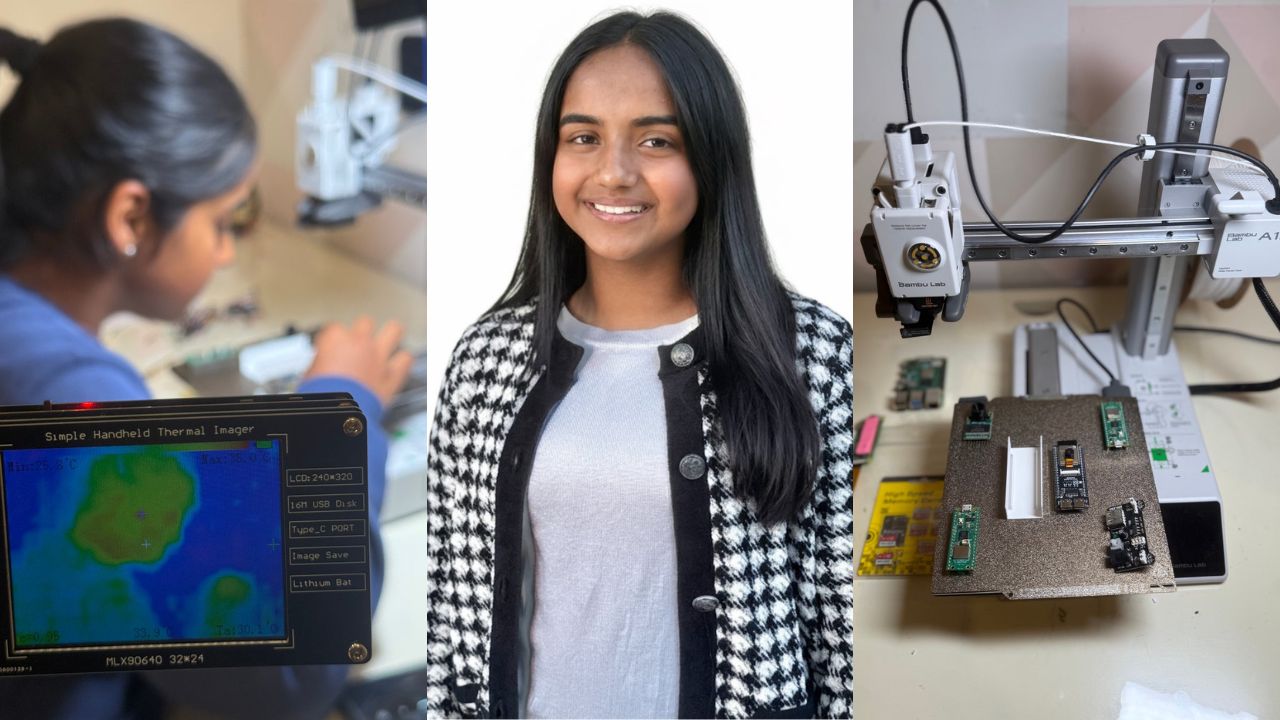When a fire broke out in a restaurant behind her San Jose, California home, 14-year-old Shanya Gill realized how devastatingly slow smoke detectors can be. Although the restaurant had all the proper safety equipment, it still wasn’t enough to prevent disaster.
“I found out that smoke detectors take way too long to detect fires,” Gill recalls. That realization sparked her mission to create a faster, smarter fire detection system — and it set her on a journey that would eventually lead to the founding of Vigil Inc., an AI-driven safety technology company.
From Curiosity to Code
Determined to make her vision real, Gill began teaching herself how to code — even though, as she admits, she “didn’t really enjoy it” at first. But as she started building prototypes, coding quickly became an essential tool for bringing her ideas to life.
After months of self-taught experimentation, Gill developed a wall-mounted thermal camera device capable of identifying unattended heat sources and sending real-time text alerts about potential fires — with 97% accuracy.
Her innovative approach earned her the top prize and $25,000 at the Thermo Fisher Scientific Junior Innovators Challenge in 2023. This year, she officially launched Vigil Inc., with plans to begin mass production by the end of 2025.
How ChatGPT Helped Her Build Vigil
As she continued refining her prototype, Gill turned to AI for support. “I would just type in any questions I had,” she says. “I just asked ChatGPT how to do it. Without it giving me very customized answers, I don’t think I would have been able to make Vigil.”
Gill also used an AI coding assistant called Cursor, which helped streamline her programming process and improve accuracy. “So I’ll just type it in a prompt, and then I’ll see — does that look right? Yeah, I think it looks right. And then it works out,” she explains.
Using AI didn’t just simplify the coding — it also helped her diversify her device’s capabilities, eliminating the need for “hard coding” specific features. Today, Vigil’s device uses both thermal and normal cameras to detect and alert users to fire risks in real time.
More Than Just Fire Detection
What started as a fire safety solution has grown into a multi-purpose smart monitoring tool. Vigil’s cameras can detect motion and activity, allowing users to monitor when their child comes home from school — or even, in Gill’s case, identify what kind of animals were digging in her backyard. (“It turned out to be crows looking for worms,” she laughs.)
Communities have already taken notice. An Arizona neighborhood prone to garage fires recently reached out to test Vigil devices. Traditional thermal detectors often fail in the state’s high heat, but Gill’s technology is designed to adapt. “It’s like having someone in your garage watching for problems — except it’s AI doing the work,” she says.
Facing Setbacks — and Finding Support
Gill’s path hasn’t been without obstacles. She spent months working toward Microsoft funding, only for the program to be canceled the day she applied. Still, she persevered — eventually securing support from Amazon and Google, which she now uses for AWS and Google Cloud infrastructure.
Her biggest lesson? Surround yourself with people who believe in your mission. “It’s important to connect with people who care about what you’re doing just as much as you do,” she says. When early outreach to big universities brought only red tape, Gill found success by reaching out to smaller networks and mentors who truly understood her vision.
“Maybe instead of reaching out to a big professor at a big college, you can start small — start with your teacher,” she advises. “That’s how progress happens: when there’s fast communication and you’re focused on the outcome.”
Looking Ahead
Gill’s goal is to sell 100,000 units and make a real difference in fire safety. She’s also exploring how Vigil could help elderly individuals — automatically alerting EMS if someone falls or becomes unresponsive.
As Vigil moves closer to production, Gill is motivated by one simple goal: saving lives through smarter, faster technology. “If you look in the news, fires happen all the time,” she says. “So it’s important to get that detection ahead of time.”
With her determination, ingenuity, and a little help from AI, this 14-year-old entrepreneur is proving that the future of fire safety — and innovation — is already here
Source: Entrepreneur


